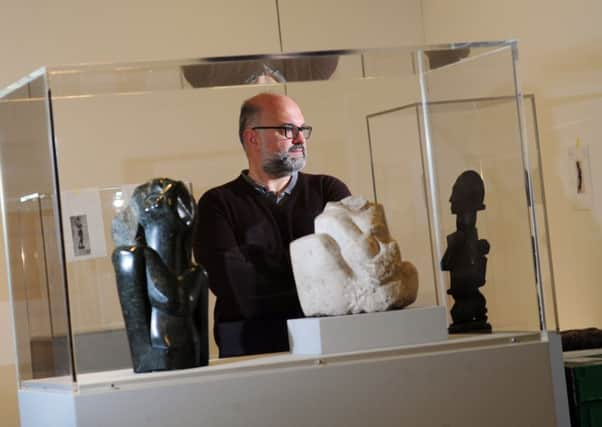Leeds's own Henry Moore is coming home in new exhibition


The funny thing about the Henry Moore Institute is it rarely houses work by the man whose name it bears. Set up by the sculptor to support other artists, it has a rolling programme of exhibitions to showcase those who followed in his wake, but Moore himself rarely features. “That’s why our new exhibition is so exciting,” says curator Sebastiano Barassi, who when we speak is busy installing Becoming Henry Moore, which focuses on the Castleford-born artist’s early work and influences.
“Moore’s formative years were absolutely crucial to the artist he became. He would later say that there were three themes to his work, the reclining figure, mother and child and the relationship between the internal and the external, and the early signs of all of them can be seen in some of his very first sculptures which were completed in the 1920s.”
Advertisement
Hide AdAdvertisement
Hide AdMoore’s pit manager father was determined his son shouldn’t follow him into the mines but initially wasn’t so sure that becoming a sculptor represented a credible alternative. It was only after the First World War where he was injured in a gas attack that Moore finally got to pursue his first love. Receiving an ex-serviceman’s grant, in 1919 he enrolled at Leeds School of Art.
It was there that he met fellow artist Barbara Hepworth and where his eyes were opened to a whole world of art. “During his time there, Michael Sadler, who was vice chancellor of Leeds University, allowed Moore access to his own private art collection. Throughout his formative years, a succession of people supported Moore in exactly the same way. They didn’t have to open up their homes to students of art, but they did it because they thought it was important to share these treasures.
“Then shortly after he completed his studies, fellow sculptors, collectors and critics volunteered their help in the form of recommendations, commissions, acquisitions and publicity, all of which played a crucial role in his artistic growth.
Moore soaked up influences from across Europe and Africa and he never forgot their generosity. It led directly to him setting up the foundation later in his life. Normally such a thing is set up following an artist’s death, but Moore knew what he wanted to do and planned it carefully.
Advertisement
Hide AdAdvertisement
Hide Ad“Both the foundation and the Leeds institute were a way for Moore to not only secure his own legacy, but to give back and provide new generations of artists and scholars with the resources that as a student and an emerging sculptor he would have wanted for himself,” adds Sebastiano.
With the likes of the British Museum and the Tate loaning a number of works to the exhibition, the theme of generosity is continued. Arranged in chronological order, Becoming Henry Moore features some of the pieces which made their mark on the young artist alongside his own work, from a piece by Michelangelo to a painting and sculpture by Picasso.
“We originally staged this exhibition earlier in the year at Perry Green in Hertfordshire, which became Moore’s home during the Second World War,” says Sebastiano. “We always knew we would be bringing it to Leeds and when we did it would be slightly different. Just because of space we have had to slim it down a little, but it is no worse for being compact and we have really concentrated on his connection to Yorkshire which seemed like the right thing to do.
“His work absolutely changes depending where it is sited. At Perry Green, which is quite remote and in the middle of rolling countryside, you really get the sense of how he was influenced by nature, but here in this urban setting you see the harder edge to his work.
Advertisement
Hide AdAdvertisement
Hide Ad“At Leeds Art College he was surrounded by like-minded spirits and had access to special facilities which meant Moore could explore ideas which were both within and outside the curriculum.
“He often recorded his interests in notes and drawings in sketchbooks and it is fascinating to read them and see what was really making him tick. By the 1930s, Moore was really in an ideal position to flourish as a mature artist. He had a stable family life and a steady job that left him time to devote to his own work. He had also secured solo and international exhibitions and had been selected to represent British sculpture at the Venice Biennale alongside Jacob Epstein and John Skeaping.
“After a decade of experimentation he has established his own style and a vocabulary of forms and themes focused on the human figure, which really remained central to the rest of his career.
“Even people who say they don’t know much about art can identify a piece by Henry Moore. His work is iconic, but this exhibition will hopefully show how he and his style came to be.”
Becoming Henry Moore, Henry Moore Institute, Leeds, November 30 to February 18. henry-moore.org